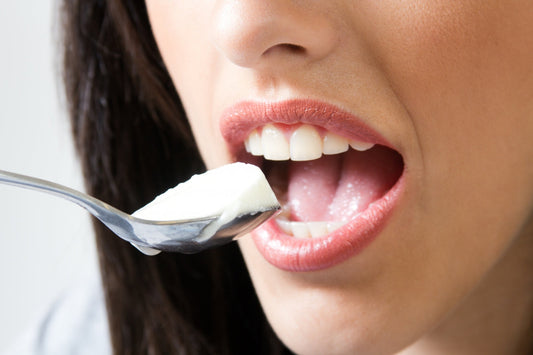Gum Recession: Signs, Symptoms, and When to Seek Treatment

Gum Recession: Signs, Symptoms, and When to Seek Treatment - Enzim Singapore
Gum recession is a progressive dental condition that often goes unnoticed until it becomes severe. Early detection is key to preventing further damage and maintaining optimal oral health. Recognising the signs and symptoms of gum recession and knowing when to seek professional treatment can help protect your gums and teeth from long-term harm.
What Is Gum Recession?
Gum recession occurs when the gum tissue surrounding the teeth pulls back, exposing the tooth’s root. This can lead to increased sensitivity, aesthetic concerns, and a higher risk of tooth decay. Gum recession is often caused by factors such as aggressive brushing, poor oral hygiene, smoking, gum disease, hormonal changes, and teeth grinding.
Signs and Symptoms of Gum Recession
Gum recession can develop gradually, making it important to be aware of the early warning signs. The following symptoms may indicate the onset of gum recession:
1. Tooth Sensitivity
As the gums recede, the roots of the teeth become exposed, leading to heightened sensitivity to hot, cold, sweet, and acidic foods. This discomfort can range from mild to severe.
2. Longer-Looking Teeth
One of the most noticeable signs of gum recession is the appearance of elongated teeth. As the gum tissue recedes, more of the tooth structure becomes visible.
3. Exposed Tooth Roots
In advanced cases, the roots of the teeth may become exposed. This can cause discomfort when eating or drinking and increase the risk of root decay.
4. Swollen or Bleeding Gums
Inflammation, redness, and bleeding gums can be early indicators of gum disease, which often leads to gum recession. Bleeding while brushing or flossing should not be ignored.
5. Bad Breath (Halitosis)
Gum recession can contribute to persistent bad breath due to the accumulation of bacteria and plaque in the affected areas.
6. Loose Teeth
As gum recession progresses, the supporting bone structure may deteriorate, leading to loose or shifting teeth.
When to Seek Treatment for Gum Recession
If you notice any signs of gum recession, it is important to consult a dentist as early as possible. Timely intervention can prevent further complications and help restore gum health. Seek professional treatment if you experience:
-
Persistent tooth sensitivity that affects your daily activities.
-
Noticeably receding gums or exposed tooth roots.
-
Frequent gum bleeding, swelling, or tenderness.
-
Loose teeth or changes in your bite.
-
A family history of gum disease or previous gum issues.
Treatment Options for Gum Recession
1. Improved Oral Hygiene Practices
In mild cases, adjusting oral hygiene habits can slow down or stop gum recession. Using a soft-bristled toothbrush and gentle brushing techniques can help protect the gums.
2. Enzyme-Based Toothpaste
Brushing with Enzim Toothpaste can aid in preventing plaque build-up and supporting gum health. Enzim Toothpaste’s active enzymes work to balance the oral microbiome, reducing harmful bacteria that contribute to gum recession.
3. Scaling and Root Planing
For moderate gum recession caused by gum disease, deep cleaning procedures such as scaling and root planing can remove plaque and bacteria from below the gum line, helping gums reattach to the teeth.
4. Gum Grafts
In severe cases, a gum graft procedure may be recommended. This involves taking healthy gum tissue from another area of the mouth and attaching it to the affected site to cover exposed tooth roots.
5. Pinhole Surgical Technique
This minimally invasive procedure repositions existing gum tissue over the exposed roots without the need for traditional grafting.
6. Orthodontic Treatment
Misaligned teeth or a bad bite can contribute to gum recession. Orthodontic treatments such as braces or clear aligners can help reposition the teeth and reduce gum stress.
Preventing Gum Recession
Prevention is key when it comes to gum recession. Follow these steps to maintain healthy gums:
-
Brush gently with a soft-bristled toothbrush and use Enzim Toothpaste to protect gum health.
-
Floss daily to remove plaque and prevent gum disease.
-
Avoid smoking and tobacco products, as they contribute to gum deterioration.
-
Eat a balanced diet rich in vitamins and minerals for strong gums.
-
Visit your dentist regularly for professional cleanings and check-ups.
Conclusion
Recognising the signs of gum recession early and seeking prompt treatment can prevent further oral health issues. Whether through improved oral hygiene, professional treatments, or using Enzim Toothpaste to support gum health, proactive care is essential. If you suspect gum recession, consult your dentist for personalised advice and treatment options to maintain a healthy smile for years to come.



